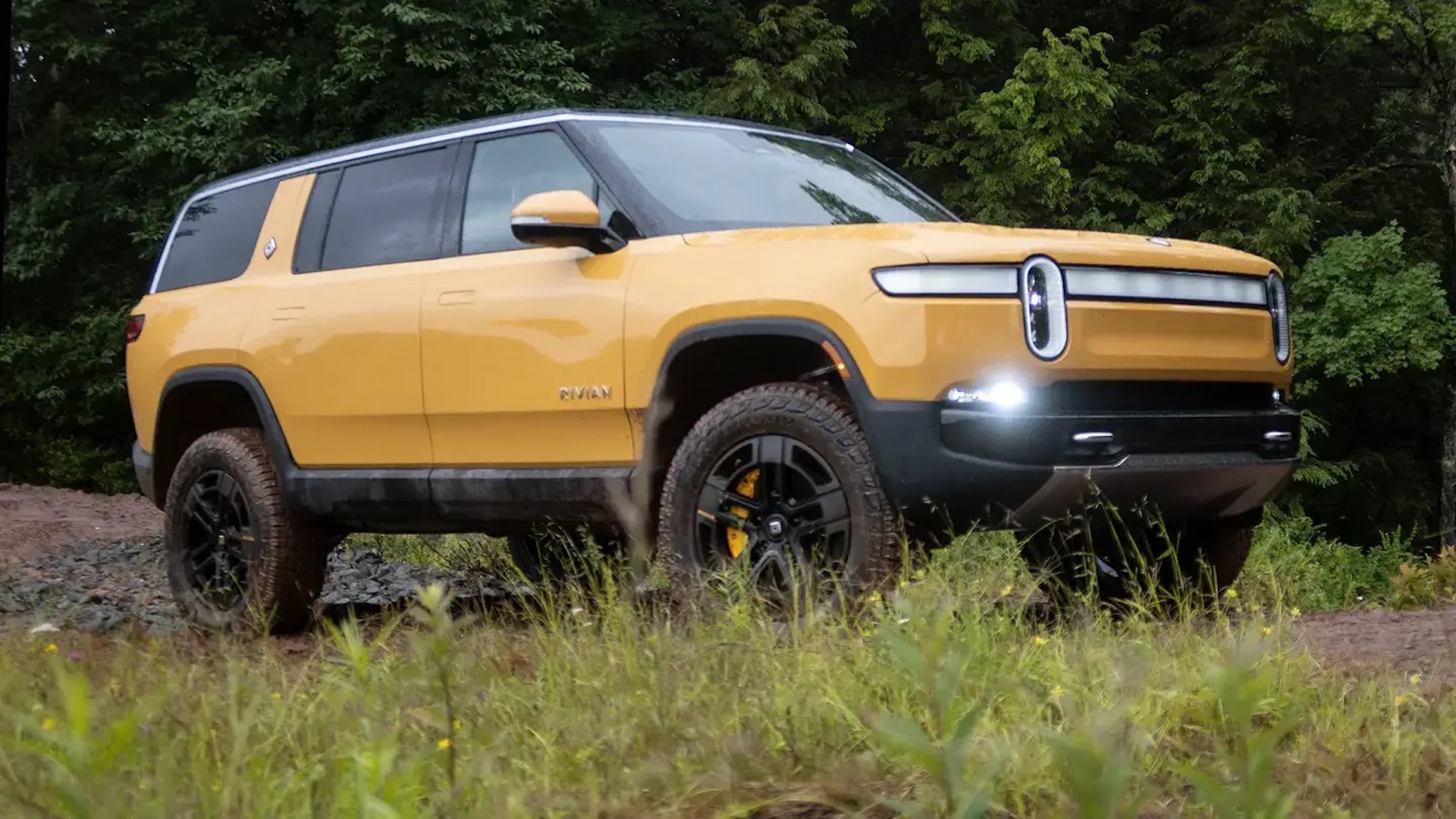

The Rivian R1T and R1S may soon get bi-directional charging capability, allowing them to charge other vehicles or feed power into a home. As covered by CarBuzz, the news comes from a Reddit thread “Rivian Responds” where moderators pass on questions to company representatives, and was later posted on Twitter.
According to the post, Rivian R1T trucks and R1S SUVs “will be capable of both Vehicle-to-Vehicle (V2V) and Vehicle-to-Home (V2H) charging.” The post states that such charging modes will rely on the CCS charging standard and that all R1T and R1S models, including those already shipped to customers, will be capable of such operation.
Vehicle-to-vehicle and vehicle-to-home charging is becoming a hot feature in the electric vehicle space. Ford has been one of the pioneers of the technology, and we’ve even seen a single F-150 Lightning charge five other EVs at once in the past. The company already sells home charger hardware that allows the Lightning pickup truck to power a home for days at a time when the grid goes down. Beyond that, plans are already in place to allow some EV owners to feed power from their cars back into the grid. GM has been pursuing a trial in California with local utility Pacific Gas & Electric with a variety of its own EVs.
The Drive reached out to Rivian directly, though the company remained coy on fully confirming the details shared on Reddit. “Bi-directional charging is not a feature offered with our vehicles at this time, however, we know anecdotally that a number of customers have used their vehicles as a power source during electrical outages as Rivian vehicles include 120V outlets,” stated a Rivian spokesperson. “We’ll be sure to keep you informed of any developments in this area,” they added.
The simple fact is that EVs are giant batteries on wheels. It’s not yet routine to use EVs and hybrids as large roving energy stores, but it’s becoming more common every day. Down the line, expect vehicle-to-vehicle and vehicle-to-home charging to become as commonplace as power steering and air conditioning are today. In the meantime, automakers like Rivian have some work to do to get these features fully functional across their range.
Got a tip? Let the author know: lewin@thedrive.com